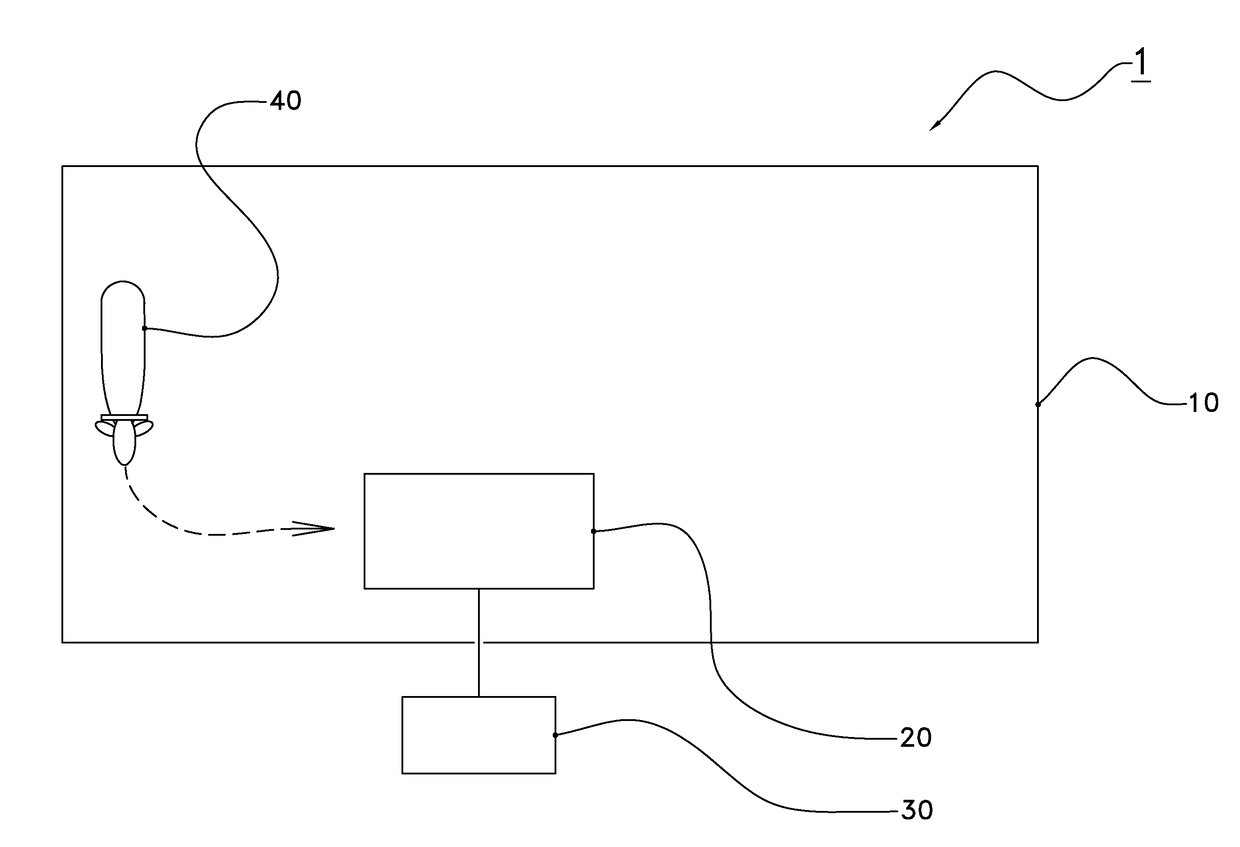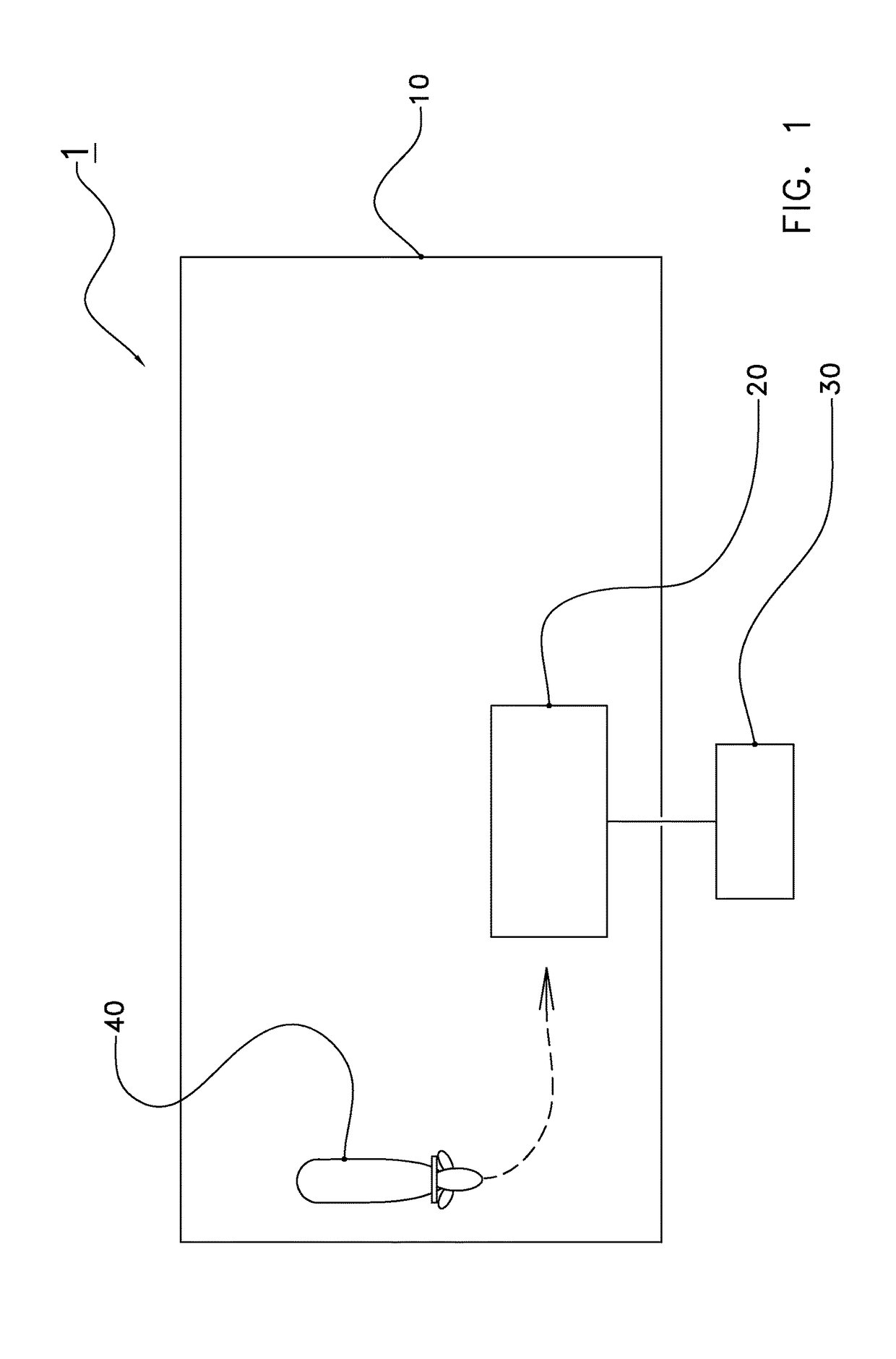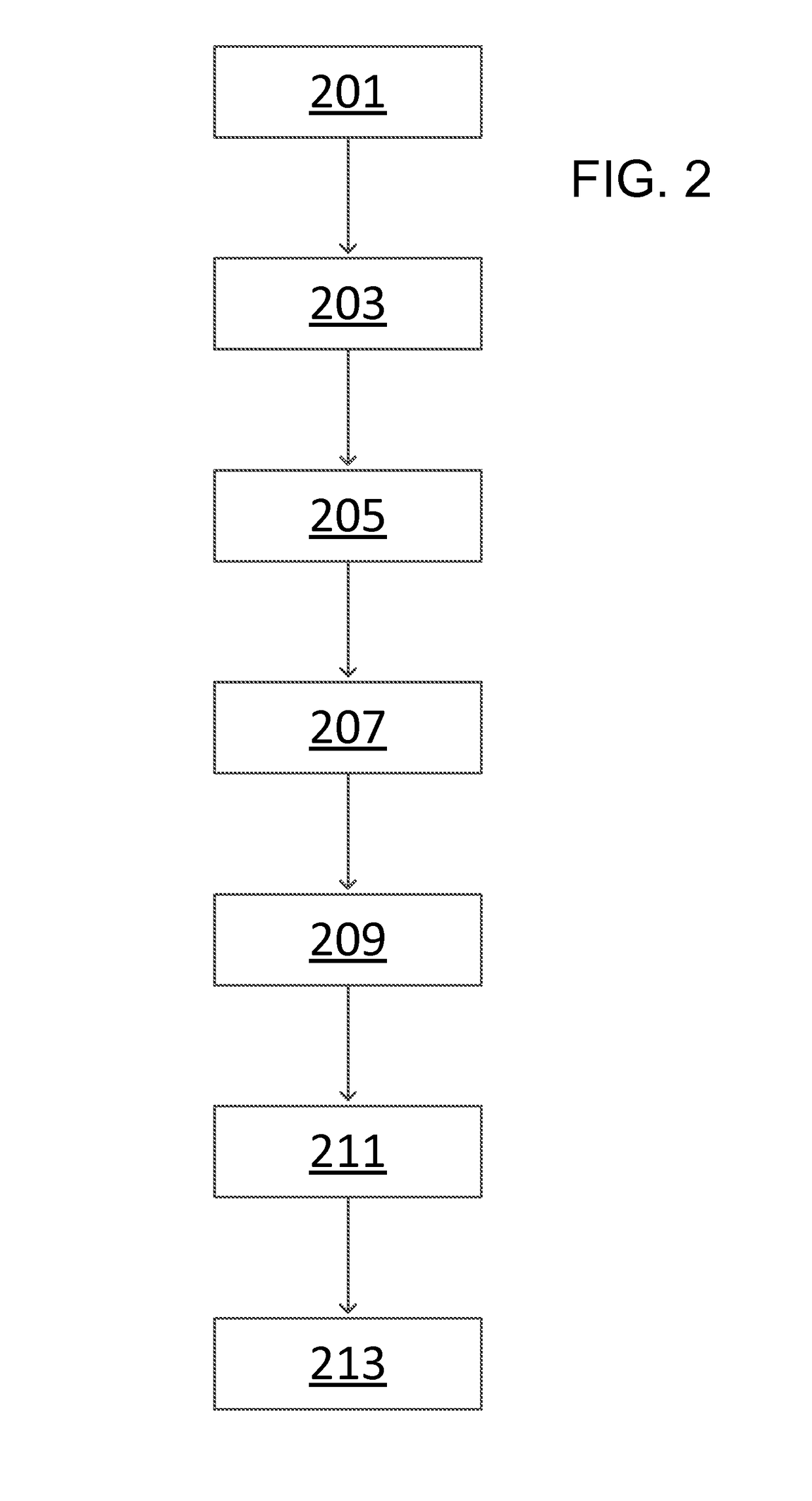Method of and arrangement for managing a group of dairy animals
a dairy animal and management method technology, applied in the field of management of a group of dairy animals, can solve the problems of reduced milk production reduced milk secretion, etc., and achieve the effect of preventing prolonged milking intervals and increasing the margin of cows such as thes
- Summary
- Abstract
- Description
- Claims
- Application Information
AI Technical Summary
Benefits of technology
Problems solved by technology
Method used
Image
Examples
Embodiment Construction
[0056]The following is a description of certain embodiments of the invention, given by way of example only and with reference to the drawings. FIG. 1 shows a general, diagrammatic view of a milking arrangement 1 according to the invention. The arrangement comprises a housing 10 in which animals, such as here a cow 40, may move about freely, as well as a milking robot 20 with a control device 30.
[0057]The control device 30 controls the milking robot 20, and more generally the milking arrangement 1. In the control device, a number of thresholds may be set, according to the invention, such as the threshold used in the example given above.
[0058]The cow 40 may go to the robot 20 and be milked if it is allowed to be milked, generally about the time of the desired milking interval DMI. If the animal 40 does not present herself for milking in due course, such that its time since last milking TLM fulfills the collecting criterion according to the invention, the control device 30 will put her...
PUM
 Login to View More
Login to View More Abstract
Description
Claims
Application Information
 Login to View More
Login to View More - R&D
- Intellectual Property
- Life Sciences
- Materials
- Tech Scout
- Unparalleled Data Quality
- Higher Quality Content
- 60% Fewer Hallucinations
Browse by: Latest US Patents, China's latest patents, Technical Efficacy Thesaurus, Application Domain, Technology Topic, Popular Technical Reports.
© 2025 PatSnap. All rights reserved.Legal|Privacy policy|Modern Slavery Act Transparency Statement|Sitemap|About US| Contact US: help@patsnap.com



